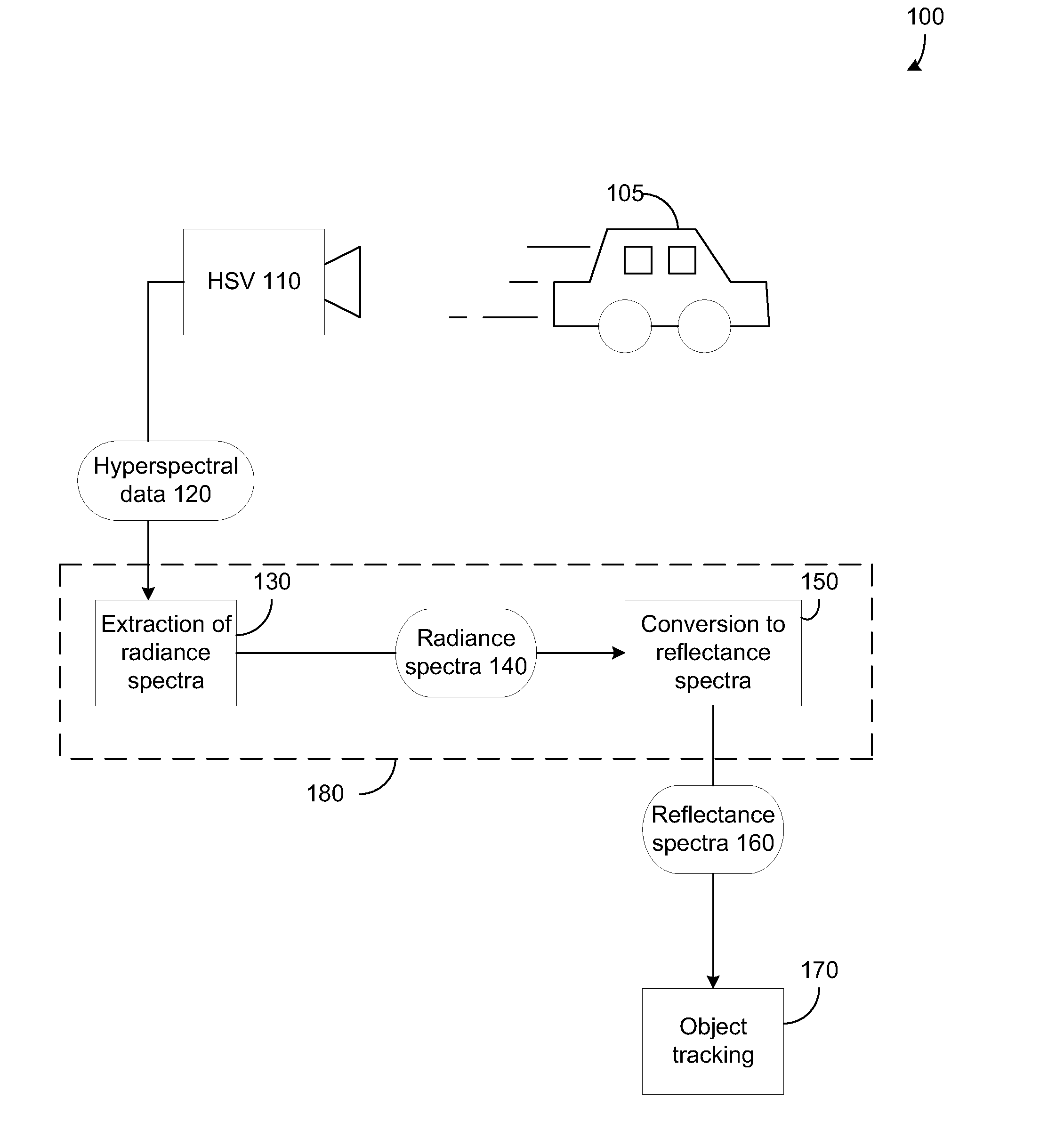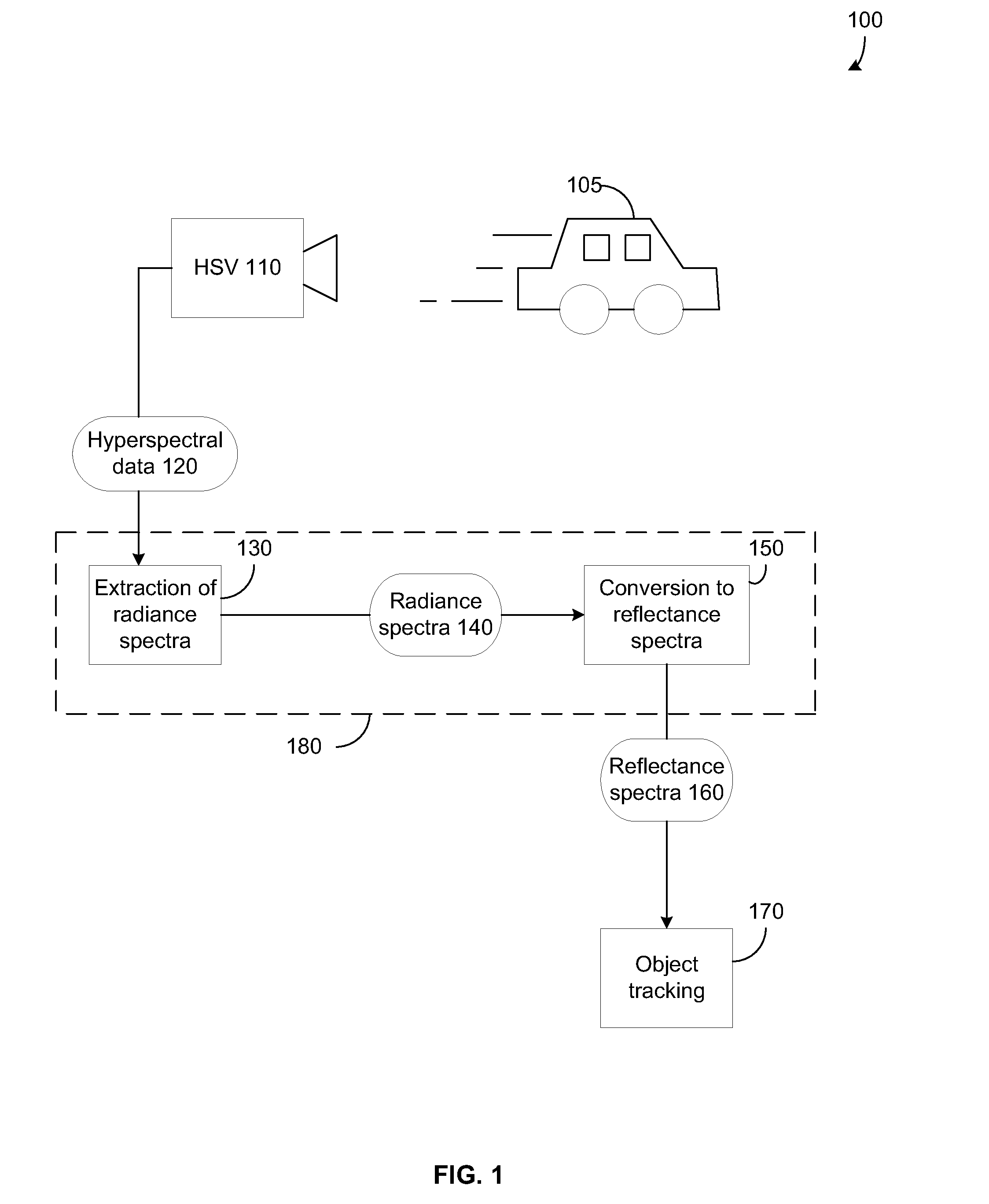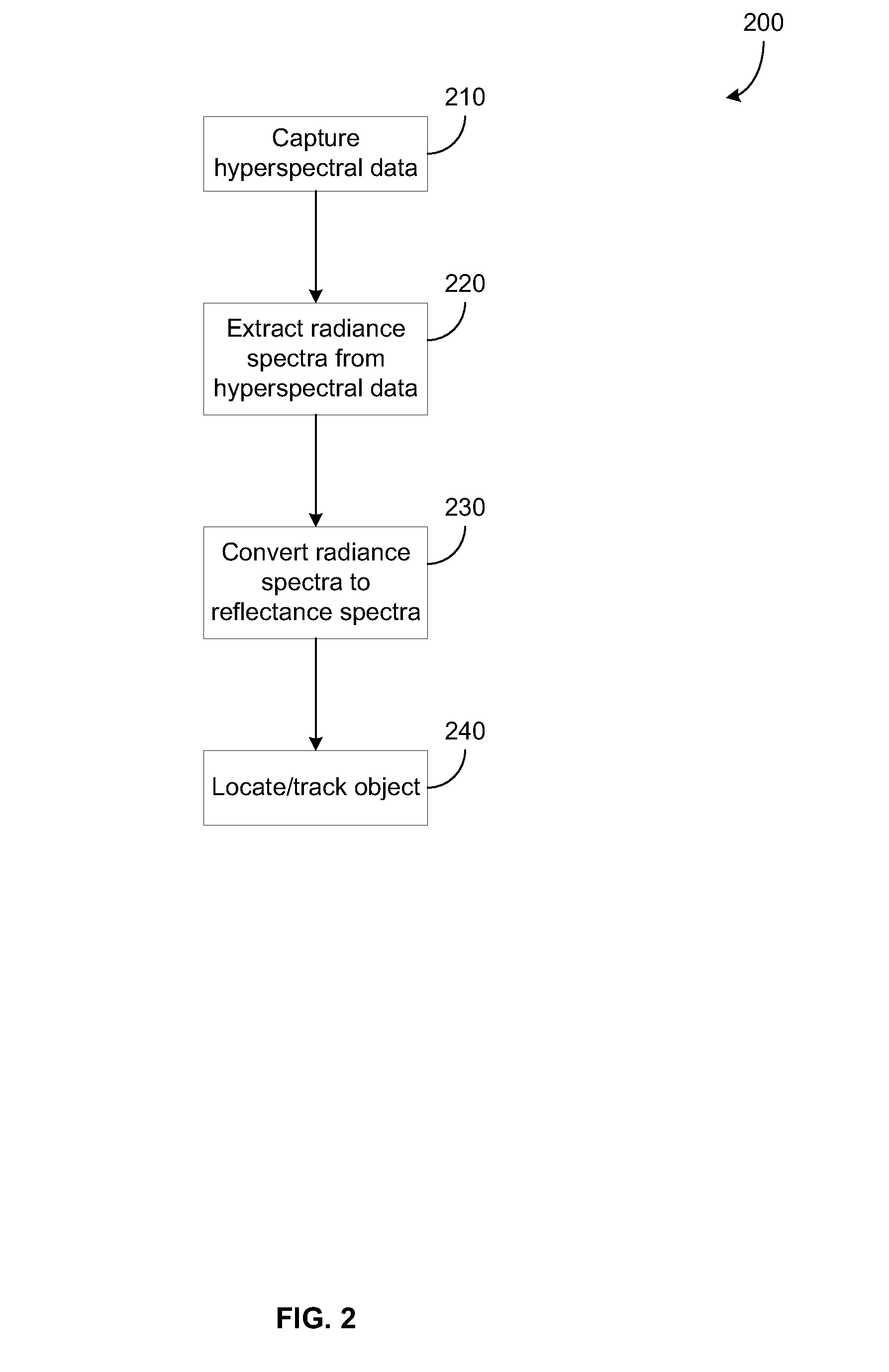Systems and Methods for Remote Tagging and Tracking of Objects Using Hyperspectral Video Sensors
a video sensor and hyperspectral technology, applied in image analysis, image enhancement, instruments, etc., can solve the problems of difficult association, difficult detection and discrimination of unambiguous objects and background, and difficult detection of objects in images, so as to reduce false alarms, high spatial and temporal resolution, and high spectral resolution
- Summary
- Abstract
- Description
- Claims
- Application Information
AI Technical Summary
Benefits of technology
Problems solved by technology
Method used
Image
Examples
Embodiment Construction
[0027]A preferred embodiment of the present invention is now described with reference to the figures, where like reference numbers indicate identical or functionally similar elements. Also in the figures, the leftmost digit of each reference number corresponds to the figure in which the reference number is first used. While specific configurations and arrangements are discussed, it should be understood that this is done for illustrative purposes only. A person skilled in the relevant art will recognize that other configurations and arrangements can be used without departing from the spirit and scope of the invention. It will be apparent to a person skilled in the relevant art that this invention can also be employed in a variety of other systems and applications.
[0028]FIG. 1 illustrates the overall system of the invention, according to an embodiment. An object 105 is shown being imaged by a hyperspectral video (HSV) camera 110. Most modern video cameras provide imagery with high spa...
PUM
 Login to View More
Login to View More Abstract
Description
Claims
Application Information
 Login to View More
Login to View More - R&D
- Intellectual Property
- Life Sciences
- Materials
- Tech Scout
- Unparalleled Data Quality
- Higher Quality Content
- 60% Fewer Hallucinations
Browse by: Latest US Patents, China's latest patents, Technical Efficacy Thesaurus, Application Domain, Technology Topic, Popular Technical Reports.
© 2025 PatSnap. All rights reserved.Legal|Privacy policy|Modern Slavery Act Transparency Statement|Sitemap|About US| Contact US: help@patsnap.com



